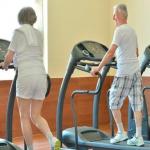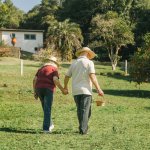Tips to avoid body pain for elders
Sadly, feeling aches and pain is a process of growing old. Does this mean older adults tolerate the pain every day? As we age, our bodies are known to become more fragile to chronic and long-term pain. Some strains are more common during certain times of your life. Understanding the problems you are facing may help alleviate the pain. The good news is, there are effective treatment methods.
Types of pains associated with aging
Headaches
Headaches are more likely to be the leading cause of pain with old age. They are usually mostly triggered by muscle tension, dehydration, and weather changes. Headaches are most likely to strike between the ages of 20 years to 50 years. A headache in the forehead and temple area could be a sign of a tension headache. An excellent way to ease this pain is to slowly massage the area that is hurting. You can apply menthol cream on your forehead or at the base of your neck. Headaches can also be caused by the pillow you choose to sleep on at night. Ensure you are choosing the best pillow to avoid any problems with sleep, thereby avoiding future headaches.
Headaches can be relieved by pain meds such as acetaminophen and ibuprofen. Make sure you don’t take these meds for more than three days without consulting a doctor. A doctor will also prescribe some migraine medicine if the pain persists. During this period, avoid certain foods such as chocolates and extreme weather conditions. You can’t prevent headaches, but the pain can be managed and reduced by using proper medication.
Non-Arthritis Joint Pain
Non-arthritis joint pain is the pain you feel in or around the joints. Most people think it is a result of osteoarthritis, but it isn’t. Tendinitis is the leading cause. The inflammation of the tendon or band of tissue connecting your muscles to your bones is the leading cause. With arthritis, patients will have a hard time moving due to the pain. Tendinitis makes you feel more pain as you move. The pain is usually caused by activities that are repetitive in motion, such as shoveling.
Tendinitis is more likely to strike at the age of 40 years. As people get older, tendons become less elastic, making them prone to injuries. You can ease the pain by using the RICE technique. The technique involves Rest, Ice, Compression, and Elevation. Make sure to break from activities that are known to aggravate joints. Make sure you also put an ice pack on sore areas, wrap it in a bandage, and prop the area. Use nonsteroidal anti-inflammatory medicine to ease inflammation.
Pelvic Pains
Research shows one in seven women aged between 18 and 50 years suffer from chronic pelvic pain. Pelvic pain feels like a dull or sharp ache. Most women think this is pain caused by periods, and it is not. In most cases, pelvic pains are a result of conditions such as Irritable Bowel Syndrome (IBS). Over-the-counter medicines are known to counter this pain. Make sure all is well by calling a doctor when you experience below-the-belt pain.
Most people wait for pelvic pains to get unbearable before reaching out to a doctor. Treatment needed solely depends on the cause of your pelvic pain. If pelvic pains are not treated on time, the pain can become unbearable.
Lower Back Pain
Lower back pain is the most common type of chronic pain in America. Putting too much pressure on the disks in your back causes back pain. Older adults are more likely to have back pain due to conditions such as arthritis. Lower back pain usually occurs at the age of 30 years and 40 years. Lower back pain can also be caused by your mattress. Backaches can occur at any age, according to Robert Fay, PT, owner of Armonk Physical Therapy and Sports Training in New York.
You can ease lower back pain by engaging in cardio exercises and strength training. Over-the-counter medicines, such as acetaminophen and ibuprofen, will help reduce back pain. Use over-the-counter medications after getting an OK from the doctor. If you have been having back pain for more than two weeks, see a specialist.
Muscle Strains
As you age, muscle fibers are known to become less dense, making them less flexible and prone to injuries. It will raise the odds of having soreness after activities you were good at, such as gardening. With every passing decade, you are more likely to get muscle strains. The only way to avoid muscle strains is by avoiding hurting yourself. The right way is to avoid lifting or pushing heavy items. Stretching can also cause muscle strains such as pilates and yoga.
Ways for older people to deal with chronic pain
Maintain an active lifestyle
Living an inactive life is one of the leading causes of chronic back pains. Humans need to stay in motion to keep fit. Tasks such as getting up from a chair or walking around can become challenging due to a sedentary lifestyle. Muscles are known to degrade to a point where they can’t support the body. Make sure to check your body fat scale and get as much daily activity as possible. Exercise is an excellent way to keep the body healthy and pain free.
Reducing stress
Stress can be a significant factor for people suffering from chronic back pain. The human body reacts to stress with increased blood pressure and muscle tension. Thankfully, treatment is available and straightforward. Spend some time in the sun, call loved ones, or go on a road trip. Make sure you provide your body with a chance to relax. Move out of your routine once a month to rejuvenate your body and mind. Keep stress away and avoid chronic back pain in the future.
Natural ways to avoid body pains
Kick start your day with a fruit diet on an empty stomach. Make sure to take fruits with Vitamin C and antioxidants, which helps cells from dying early. Increase your protein intake to help build up muscle endurance. Proteins will enrich your muscles and in turn, prevent wear and tear from bones.
Don’t accept having body pains are a normal part of getting older. Having a combination of effective preventative, medical, and natural treatments will prolong life. Feel years younger by exercising daily and having a high diet.
Resources— WebMD, HuffPost, Pratco.com
More to Read:
Previous Posts:
Next Posts:




